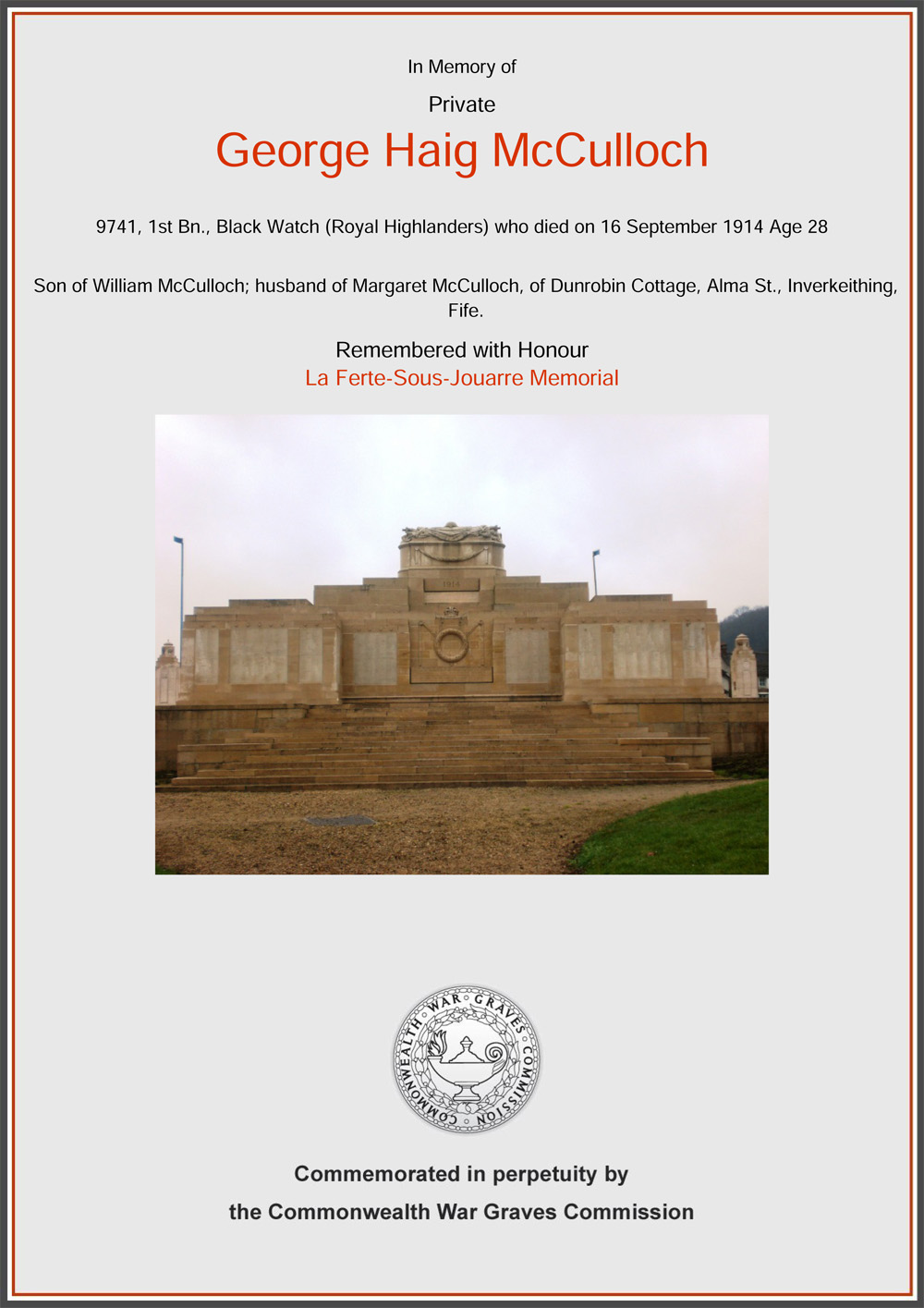Other Information
His family lived for a time in Church Street, Inverkeithing and George attended Inverkeithing School.
He first became a Grocer’s Apprentice, but then enlisted as a Private in the regular army, serving nearly 7 years in India, before going into the reserve.
He moved to North Queensferry and became a Quarryman and Sett Maker.
In 1913 he married Margaret Cant Armit, who subsequently lived at Dunrobin Cottage, Alma St., Inverkeithing.
As a reservist, he was recalled to the colours at the outbreak of war and arrived in France on 13 August 1914 with the regular battalion. Shortly afterwards he was made acting Lance Corporal and attached to his company’s machine gun section. The 1st Black Watch formed part of 1st Brigade in the 1st Division.
George would have taken part in the first major action in which the BEF engaged the German Army in the Battle of Mons from 23rd – 24th August 1914. It was here in Belgium that the long retreat started for the allies – all the way to the river Marne in France (a retreat which lasted some three weeks). It was here on the river Marne that the allies halted the German advance towards Paris – the Battle of the Marne from 7th – 10th September 1914.
It appears that George was wounded during this battle – or just shortly afterwards.
He was reported as wounded and missing, but subsequently as “died of wounds” on Wednesday the 16th September 1914.
As he was recorded as having died of wounds it might seem likely that George would originally have been buried, but due to subsequent fighting the burial location was lost.
The initial report of him as “missing” tends to emphasise the general confusion of the moment.
Consequently, George is commemorated on the La Ferte-Sous-Jouarre Memorial.



